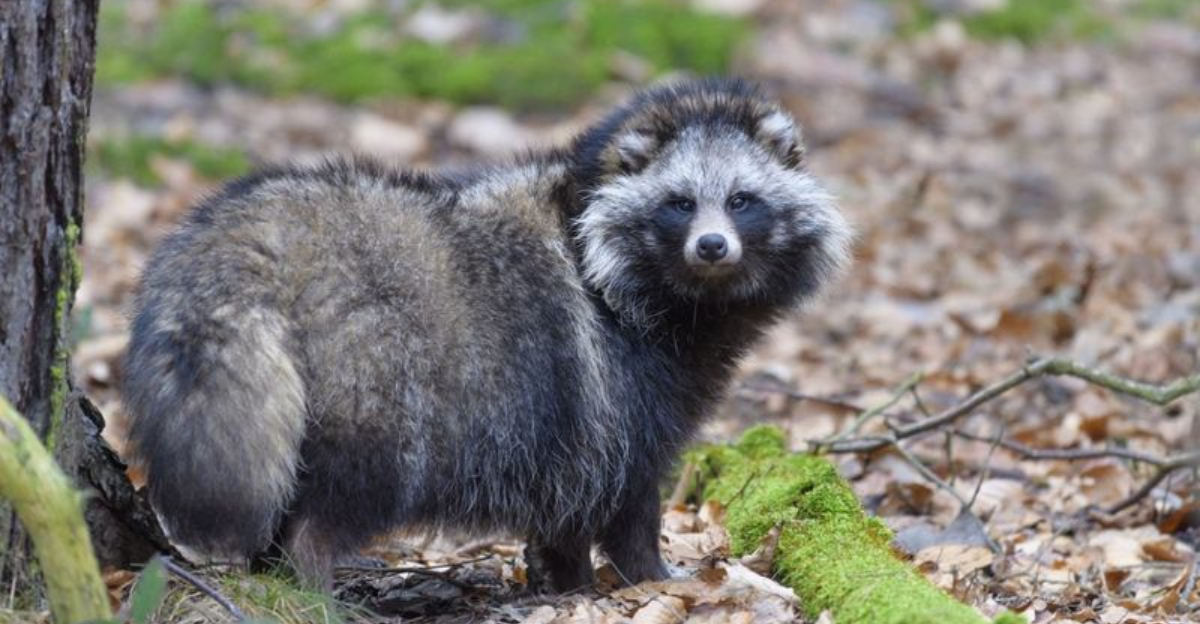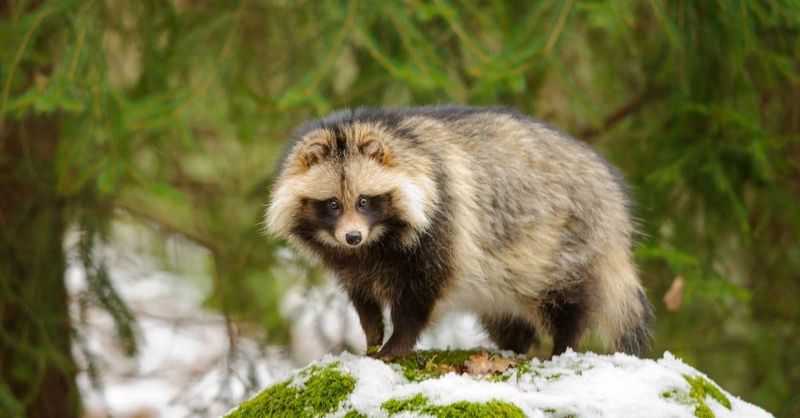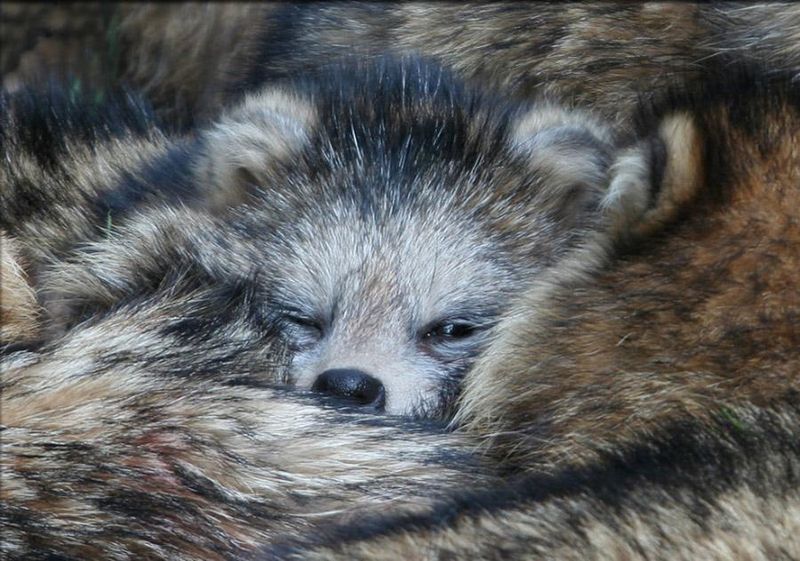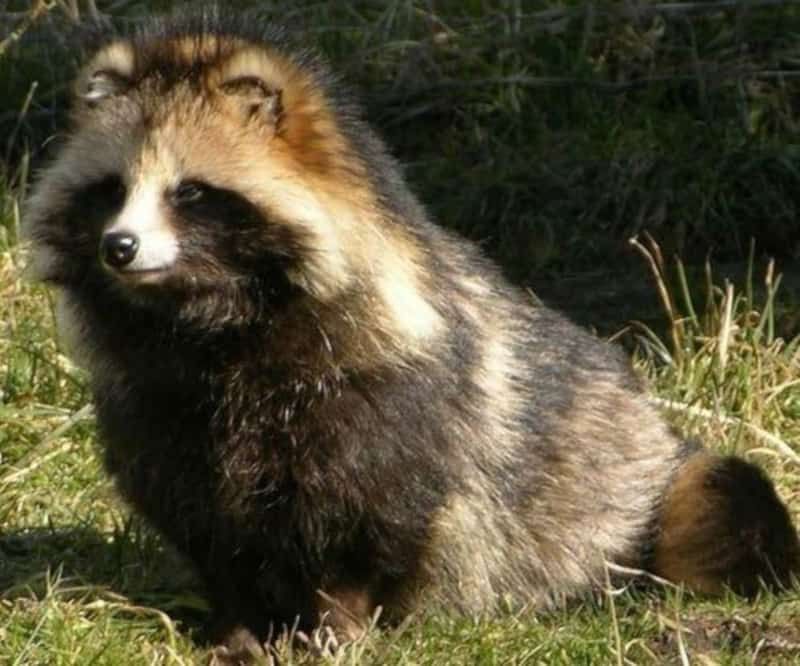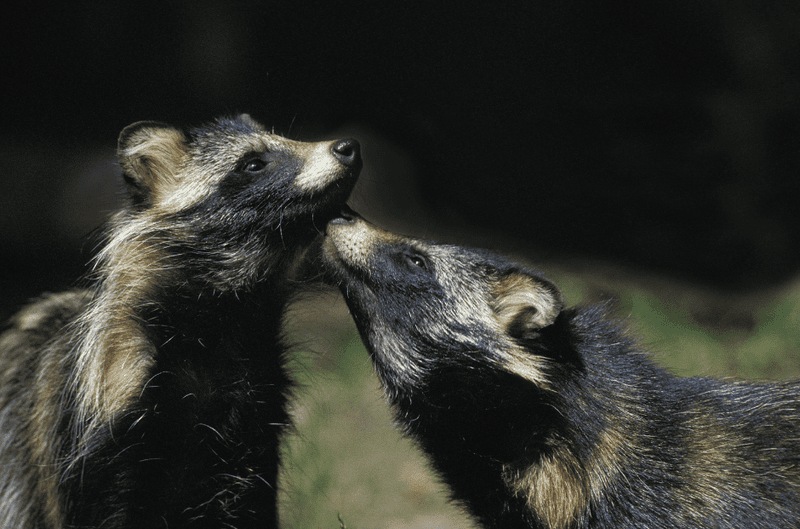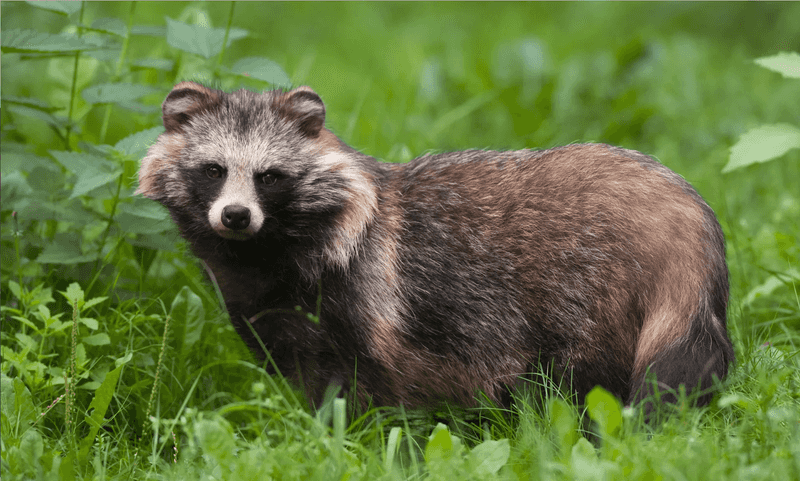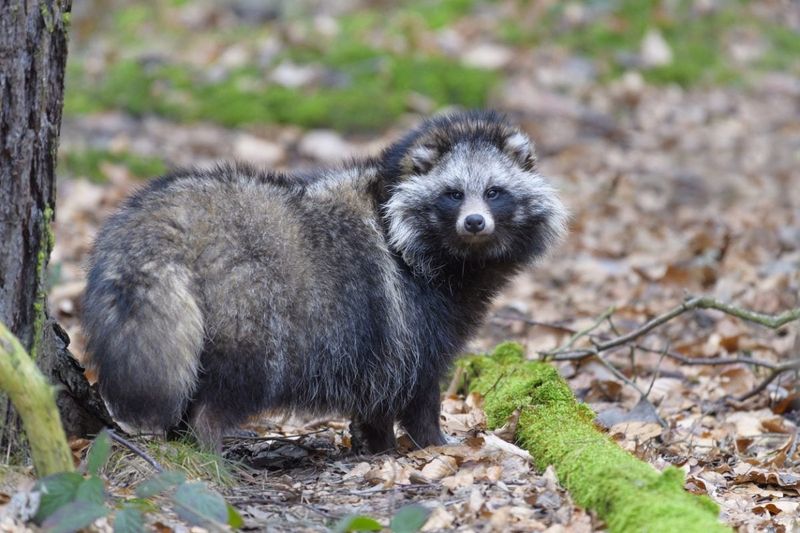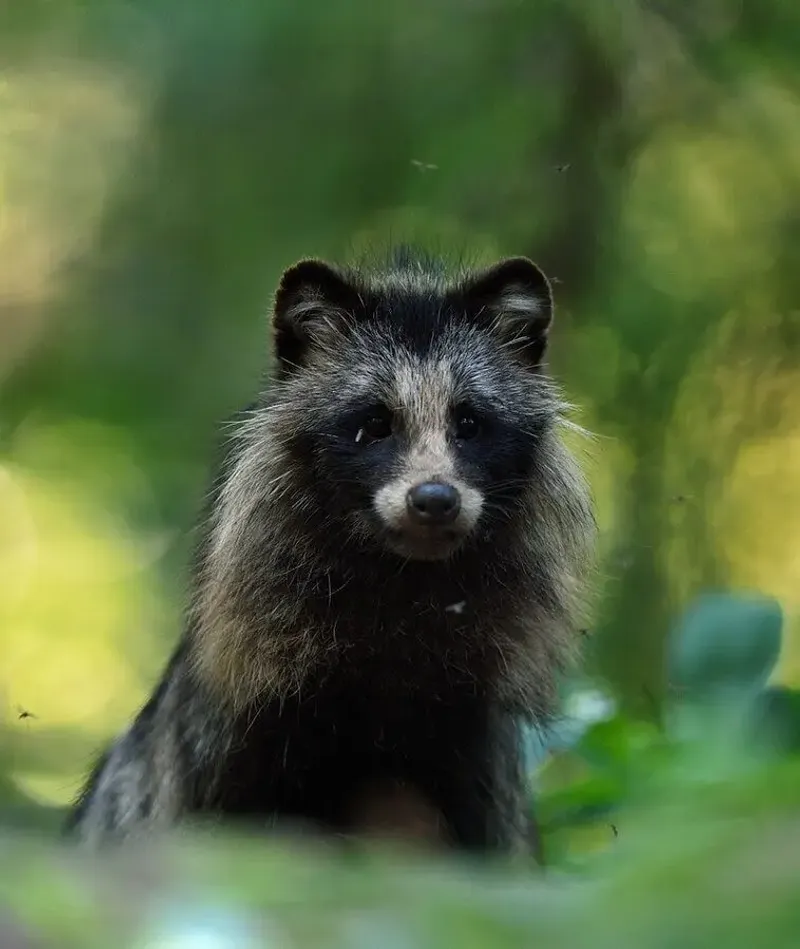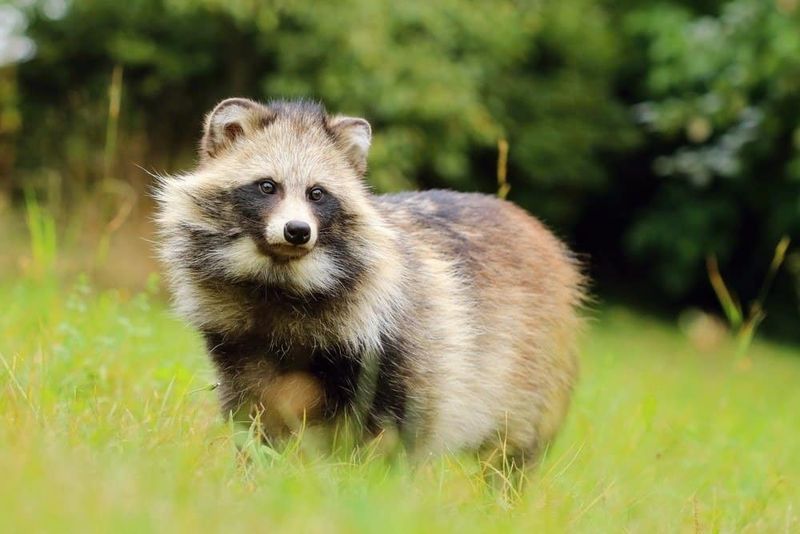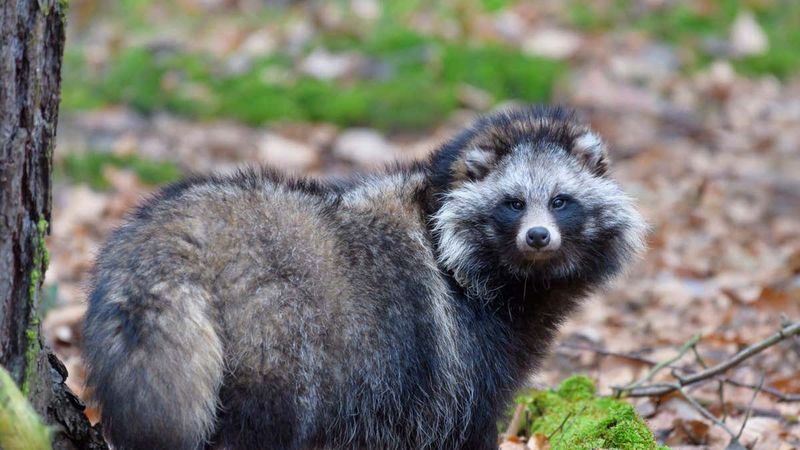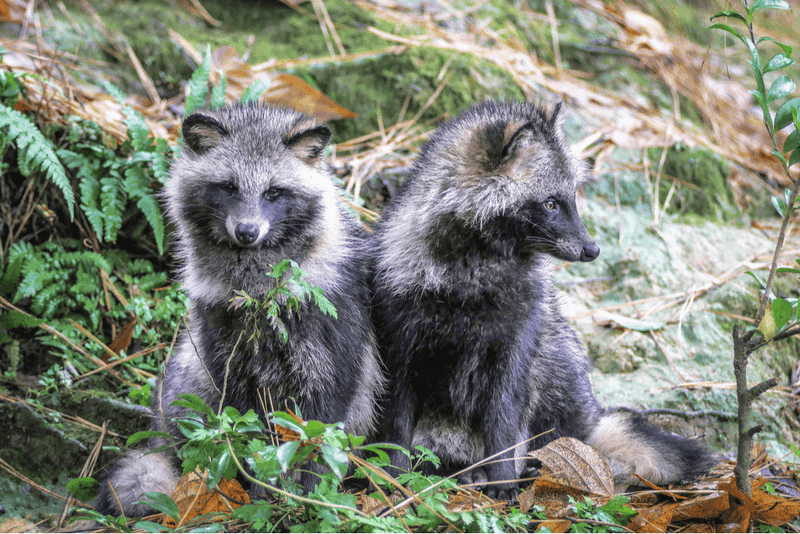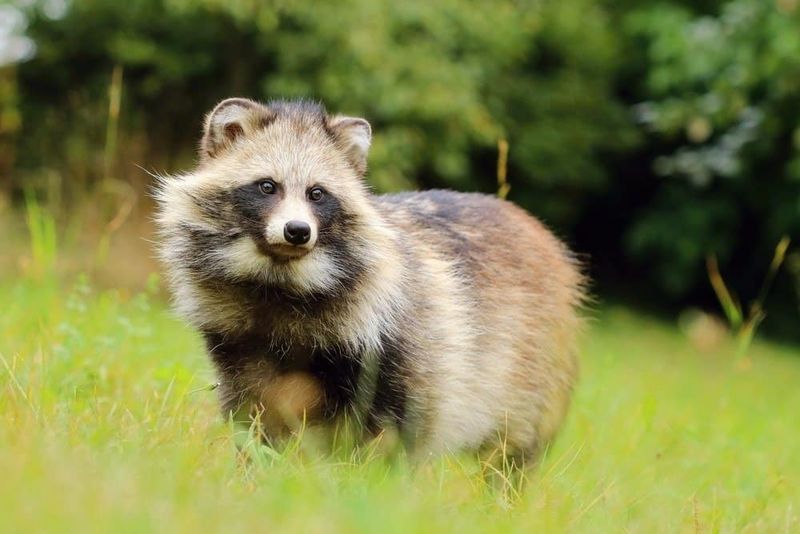The raccoon dog, known scientifically as Nyctereutes procyonoides, is an intriguing and enigmatic creature. Resembling a fusion between a raccoon and a small dog, this animal is neither one nor the other. Native to East Asia, the raccoon dog captivates with its unique traits and behaviors. This blog post explores 13 peculiar and astonishing facts about this mysterious animal, shedding light on its distinctive lifestyle and adaptations.
The Name Misnomer
Despite its name, the raccoon dog is not closely related to raccoons. Instead, it’s a member of the Canidae family, which includes foxes and wolves. Its name stems from its distinctive facial markings that resemble those of a raccoon. This misnomer often confuses animal enthusiasts, who may expect a more direct lineage with raccoons.
Yet, the raccoon dog’s unique characteristics make it a fascinating study of convergent evolution, where different species evolve similar traits independently. This intriguing blend of appearances keeps the mystery alive.
Hibernation Habits
Unlike most canids, raccoon dogs have the rare ability to hibernate. When winter arrives, these animals seek out cozy dens to escape the cold. Their thick fur provides insulation, while their bodies slow down to conserve energy.
This hibernation behavior is quite unusual among their canine relatives, setting raccoon dogs apart in the animal kingdom. Their ability to adapt to harsh winters is a testament to their resilience and survival skills. It’s a fascinating facet of their biology that continues to intrigue researchers.
Varied Vocalizations
Raccoon dogs are known for their diverse vocal repertoire. Unlike the typical barks or howls of other canids, these creatures produce a variety of sounds, including growls and yelps.
Their vocalizations play a crucial role in communication, especially during mating season or when warning off predators. These sounds are a symphony of survival, each one serving a specific purpose in their natural habitat. This auditory diversity not only enriches their social interactions but also adds a layer of intrigue to their enigmatic nature.
Monogamous Mates
In a world where many animals have multiple mates, raccoon dogs stand out for their monogamous pairings. Once they find a partner, they mate for life, raising their young together in a display of dedication and teamwork.
This lifelong bond is a rarity in the animal kingdom, highlighting their unique social structure. The commitment to a single partner ensures both parents are involved in nurturing their offspring, promoting a supportive family environment. It’s a heartwarming aspect of their behavior that underscores the importance of partnership.
Flexible Diet
Raccoon dogs are opportunistic feeders, with a diet as diverse as their habitats. From fruits and vegetables to small animals and insects, they consume a wide array of food.
Their dietary flexibility allows them to thrive in various environments, adapting to the availability of resources. This omnivorous nature not only showcases their adaptability but also their role in the ecosystem as both predator and scavenger. It’s a dietary strategy that ensures survival in the face of environmental changes.
Unique Fur Patterns
The raccoon dog’s fur is not only thick but also uniquely patterned. This dense coat provides excellent camouflage in their natural habitats, blending seamlessly with forest floors and underbrush.
These distinct fur patterns are crucial for avoiding predators and stalking prey. The rich textures and colors vary among individual raccoon dogs, adding to their mysterious allure. This fur is more than just a coat; it’s a vital survival tool that has evolved over generations to protect and conceal.
Escape Artists
Known for their elusive nature, raccoon dogs are adept escape artists. When threatened, they exhibit remarkable agility and cunning, often outsmarting predators.
Their survival tactics include climbing trees and using dense vegetation for cover. This ability to evade danger makes them a challenging prey for larger animals. These skills are not just about physical prowess but also reflect their intelligent problem-solving capabilities. It’s a testament to their adaptability and cunning in the wild.
Nighttime Wanderers
Raccoon dogs are primarily nocturnal, spending their nights exploring and foraging. This nocturnal lifestyle helps them avoid daytime predators and take advantage of the cooler temperatures.
Their eyes are specially adapted for low-light conditions, allowing them to navigate and hunt efficiently in the dark. Nighttime is when the forest comes alive for these creatures, as they use their senses to explore the mysteries of the night. This nocturnal habit is a key aspect of their enigmatic nature.
Culturally Significant
In Japanese folklore, raccoon dogs hold a place of cultural significance. Known as “tanuki,” they are often depicted as shape-shifters and tricksters.
These mythical portrayals reflect the raccoon dog’s mysterious and elusive nature. Over centuries, they have been featured in stories and art, symbolizing good fortune and prosperity. This cultural resonance adds a layer of mystique and reverence to their real-life counterparts, blending myth with reality in a fascinating way.
Adaptable Dwellers
Raccoon dogs are incredibly adaptable, thriving not only in wild habitats but also in urban environments. Their ability to adjust to city life showcases their resilience and opportunistic nature.
Urban raccoon dogs often scavenge for food and find shelter in parks and gardens. This adaptability highlights their survival skills in diverse settings, from forests to bustling cities. As they navigate human-dominated landscapes, they continue to intrigue researchers with their ability to coexist with civilization.
Mysterious Origins
The origin of raccoon dogs is shrouded in mystery. Native to East Asia, they have since been introduced to parts of Europe, where they have adapted to new environments.
This expansion has sparked interest in their ecological impact and adaptability. Their mysterious journey from native lands to new territories adds to their enigmatic reputation. Understanding their origin and migration patterns is key to unraveling the complexities of their existence.
Playful Personalities
Raccoon dogs exhibit playful behavior, especially among young pups. This playfulness is essential for social bonding and learning survival skills.
Through play, they develop hunting techniques and social hierarchies, preparing them for adult life. This playful nature is not only entertaining but also crucial for their development. Observing raccoon dogs at play provides insights into their social structure and the importance of interaction in their communities.
Environmental Impact
Raccoon dogs are an integral part of their ecosystem, impacting both prey and vegetation. As omnivores, they help control insect and small mammal populations.
Their foraging habits also aid in seed dispersal, contributing to plant diversity. This ecological role underscores their importance in maintaining balance within their habitats. Their presence is a reminder of the interconnectedness of nature and the subtle ways in which species influence one another.
